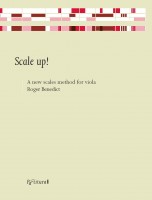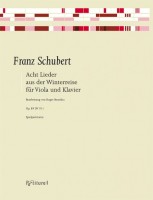
Balancing the Scales - why I created a new viola scale method |
When I told friends and colleagues that I was publishing a new scale method for viola, I was greeted with a few raised eyebrows. «What’s wrong with Flesch or Galamian?» some said.
Roger Benedict - The scale books of Carl Flesch and Ivan Galamian are omnipresent in teaching studios around the world, and they have clearly stood the test of time. There are others of course - by such established names as Mogill and Ševčík, or more recent ones by Barbara Barber and Simon Fischer. But they all have one thing in common: they are violin methods that have been adapted for the viola.
I often wonder why there are so few dedicated scale or study materials for the viola. Are we so in thrall of violinists that we have to copy everything they do?!
Adapting a violin method for the larger viola involves solving problems of both content and fingering, and in some adaptations the fingerings are simply left unchanged – I have seen so many violists struggle to traverse the fingerboard using the 'traditional' violin fingerings. And four octave scales, double-stopped tenths and fingered octaves (which can be dangerous activities for violists) are often carried over from violin methods to their viola versions regardless of whether they are useful or practicable.
I have often felt that the emphasis in scale practice is too much on speed and fluency and not enough on harmonic awareness and sound. Therefore exercises for sound production and for harmonic context are important parts of my scale method. I include a section on tuning the instrument (and no, it’s not a viola joke…), because you can’t play a scale in tune if the instrument isn’t itself in tune to start with. And anyway what does 'in tune' mean in different contexts? I include an explanation of Equal Temperament, the system of tuning to slightly narrow fifths that is in general use, as I have observed that many players lack an understanding of how this system works.
Fingering
In many methods three octave scales and arpeggios from E flat onwards start on the second finger. But for a lot of players this fingering leads to a stretch in the hand from the 3rd to 4th step and the 7th to 8th step of the first octave and the awkward stretch when using adjacent fingers to play the interval of a fourth at the top of the arpeggios.
e.g. Flesch:

My fingerings for three octave scales and arpeggios start with the 1st finger, which allows the first octave of the scale - the one with the widest intervals - to be played within an octave hand frame, and avoids awkward stretches in the arpeggios.
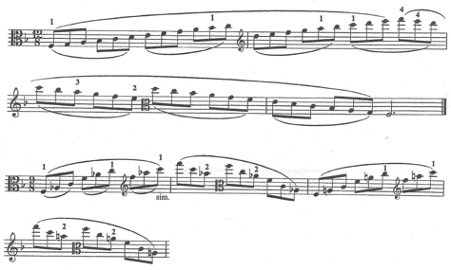
In my book I suggest isolating all the shifts in scales and arpeggios and practicing them like this:

My fingerings for double stops are more of a departure from other methods. My argument is that conventional 'substitution' fingerings can create unnecessary tension in the left hand and make it hard to play thirds and sixths smoothly and truly legato. In a piece it is often better playing parallel intervals (e.g. going from a major sixth to major sixth) with the same pair of fingers rather than with substituted fingers.

Harmony and intonation
Many pedagogues talk about 'melodic' or 'expressive' intonation and it is commonly suggested that we should treat major thirds and major sevenths as leading notes and play them on the high side.
Good intonation relies on an intimate knowledge of the harmony that underpins the music, and this theory of 'expressive intonation' ignores some basic harmonic truths. For example, the seventh in a major scale often acts as the major third in the dominant key and therefore in that case needs to be played low. And in their usual harmonic context minor thirds will be problematic if played on the low side.
In his viola scale book Simon Fischer aims to give credibility to the expressive intonation theory by stating: «The cellist Pablo Casals, widely regarded as one of the most influential musicians of the 20th century taught scales in this way, as did Dorothy DeLay, one of the foremost violin teachers at the end of the 20th century.» «Casals and DeLay structured the scale as follows. Begin with the notes of the perfect intervals I, IV, V, VIII, then add the leading note (VII), feeling what Casals called its gravitational attraction upward to the tonic and the third, feeling it as a 'leading note' to the fourth». «The sequence taught by Casals and DeLay is musically satisfying in both major and minor keys.»
This is at best an overly simplistic approach, and at worst a seriously flawed one unsupported by science or musicality. It would seem that violinists tend to approach intonation only in the context of their own individual playing.
There is no doubt that we do need to use 'melodic' intonation at times, but certainly not all the time. Good intonation is a balance between culture (our musical intuition and taste) and nature (acoustical characteristics), and influenced by many factors, including the speed, character and instrumentation of the piece or passage we are playing.
To work on both intonation and harmonic context, I suggest playing scales and arpeggios with a drone – a sustained note on a tuner or, ideally, a recording of the note played on the viola. Playing with a drone makes it easier to feel that we are playing a series of intervals rather than a series of steps.
I also include an exercise to play scales along with a series of simple chords (which can be recorded on the piano) in order to tune notes within a specific harmonic context.
I place chromatic scales in the frames of diminished and augmented arpeggios, which divide the octave into four minor thirds and three major thirds respectively.
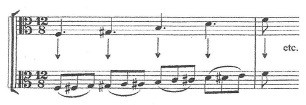

I hope that violists will enjoy knowing that for once they are not an afterthought and appreciate that this book has been created from the outset with the viola fingerboard in mind. My students have been using this method for some twenty years and I believe that - with adequate practise of course - it helps build strong technical foundations and consistent stable intonation.
Roger Benedict, Bratschist:

Roger Benedict has had a distinguished career as both performer and pedagogue in Europe and Australia. He has held principal viola positions in several leading orchestras (including the Philharmonia Orchestra, London and the Sydney Symphony Orchestra in Australia), has performed as a soloist with orchestras such as the Royal Philharmonic, Royal Liverpool Philharmonic, Philharmonia Orchestra, Ulster Orchestra, the Sydney Symphony and New Zealand Symphony, and made a number of acclaimed solo recordings on the Melba and ABC Classics/Universal Music labels. He has held teaching positions at the Royal Northern College of Music in the UK and the Sydney Conservatorium of Music in Australia. He is particularly involved in orchestral training, working with the European Union Youth Orchestra, the National Youth Orchestra of Great Britain and the Australian Youth Orchestra. He has also pursued a successful career as a conductor. Roger is currently Chief Conductor and Associate Professor of viola at the Sydney Conservatorium of Music and Artistic Director of the Sydney Symphony Fellowship Program, Australasia’s leading orchestra academy.
His other Partitura-Verlag publications include viola transcriptions of works by Mozart and Schubert. His arrangement of Debussy’s Four Preludes will be published in 2021.
The website of Roger Benedict: www.rogerbenedict.com
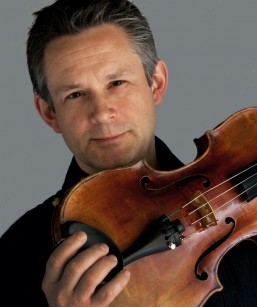
www.rogerbenedict.com
A new scales method by Roger Benedict
» to the edition
|
Arrangements by Roger Benedict |
8 Lieder aus der Winterreise
for Viola and Piano» to the edition
More interesting blog article |
 Playing and dancing...
Playing and dancing...
...on ergonomically customized violas. The method is based on movement. That’s how kids are spared from tenseness. A special method of viola construction further serves this goal. Read about Tina with her children students.
» to the blog article
Viola Newsletter |
 Do you don't want to miss any news regarding viola anymore? Our monthly viola news letter will keep you informed.
Do you don't want to miss any news regarding viola anymore? Our monthly viola news letter will keep you informed.
» Subscribe to our viola letter for free
|
|
 Visit and like us on Facebook.
Visit and like us on Facebook.
» Music4Viola on Facebook
